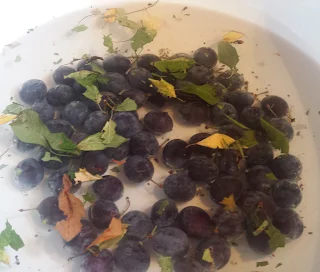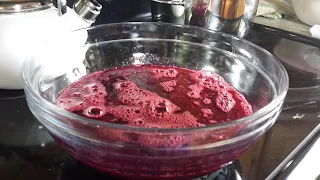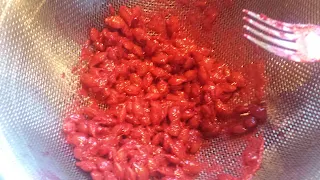
Often, people ask me if I might help them shop for groceries. It seems that they believe I must know some secret for making quick and efficient work of this chore.
Well, perhaps I do.
Over 20 years ago I was diagnosed with systemic lupus erythematosus, or SLE - commonly referred to as just "lupus." Through trial and error I found a few keys to making life easier. One of these was a diet based on these five basic ideas:
1. Simple
2. Fresh
3. Local
4. Organic
5. Varied
You can remember them by looking at your hand, where it just so happens that there are five fingers - one for each basic idea.
Cool, huh?
These five keys do simplify grocery shopping, meal planning, and food preparation a great deal. Choices that aren't so good for you are immediately eliminated by keeping them in mind.
Each key can be further described as follows:
Simple
In its most basic terms,
simple means as few ingredients as possible. It is the first tenet of a basic lifestyle and diet. For instance, when you take a look at the ingredient list printed on a container of food - a loaf of bread, a can of soup, a box of cereal, you should be able to cover it lengthwise with one finger. If a few words or lines of text peek out below that finger, put it back. It isn't simple. Too many ingredients mean food additives and things that aren't really food. You don't need that stuff in your life.
Simple means basic, plain vegetables, fruits, meats, and grains. You can combine them in your kitchen. If you decide to purchase something someone else has made, keep that simple rule in mind. Their list of ingredients shouldn't be any longer than it would be if you'd made it yourself.
Fresh
Not canned, frozen, pickled, dried, or otherwise preserved. Eat predominantly fresh foods every day. Use preserved foods sparingly. Preserving food is sometimes necessary, but be mindful that it introduces extra ingredients (see "simple") such as salt, flavorings, sugar, and other things you don't want too much of. If you want to preserve foods you can do it yourself. Make your own jams, bread, yogurt, chili beans, pizza, cookies, meat loaf, pudding. You'll know what's in it, and you don't have to worry about things you can't pronounce cluttering up your intestines and causing all sorts of unpleasantness.
Local
The closer something is to your table, the less likely it is to have additives and other questionable unpleasantness like extra sugar, salt, and preservatives. Local means the farmer just outside of town, the dairy up the road, catfish from the river. If you're eating foods from your neighborhood you're going to be more aware of things that might affect your health. Local means fresh, simple, and varied. Local also means fewer environmental impacts in getting that food to you. And that's always a bargain.
Organic
One day, we'll all eat this way. Pesticides, herbicides, feedlots and unnecessary pharmaceuticals in our foods cost more and drive up the cost of production. Don't reward bad behavior. Remember, eating organic means you're putting less questionable things in your body. It's better for the earth -- better for our streams, soils, and the air we breathe. But do your research - make sure the company behind the label is reputable and isn't just "greenwashing."
Varied
If we go by what's in season not only will we be eating the freshest, healthiest food, but we're assured of a constantly changing variety. Sure, you may go on a binge and want to eat peanut butter for lunch three days in a row, or a week's worth of salads, but normally you won't want to press it beyond that. A varied diet means plenty of choices in color and texture; it means meats and potatoes, soups and sandwiches, nuts, fruits and cheeses. It means raw and cooked, bland and spicy. Use herbs, vinegars, piquant vegetables, peppery spices and creamy milks to add interest and nutrition when you prepare meals. Variety also means don't do it all yourself. Ask for help - children and those who might not normally be found in the kitchen will enjoy meals they helped bring to fruition.
A few final thoughts -
Given a choice between an organic vegetable shipped across the country
and a local but conventional one - choose the local. Many local farms
actually use a minimum of artificial pesticides and additives, but
haven't been certified because of the cost of the labeling. Bottom line -
know where your food comes from. Make sure the actual cost of the food
is reflected in your choices. "Cheap" is rarely better, and almost
always doesn't take into account the cost to the earth or society. Which means - we'll be paying for it in the long run.
Good food is like medicine. It's an investment in your health. Choose wisely, and you'll reap the rewards of your wisdom!
 A Place Called Rainwater by Dorothy Garlock
A Place Called Rainwater by Dorothy Garlock






















